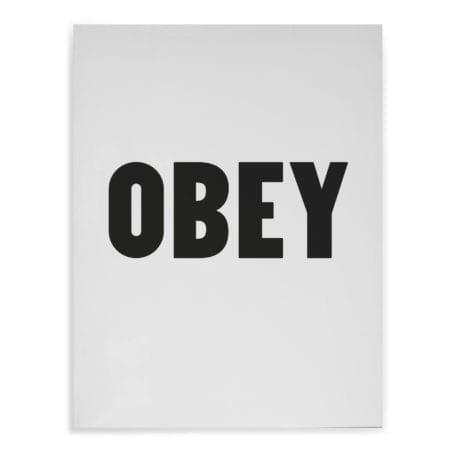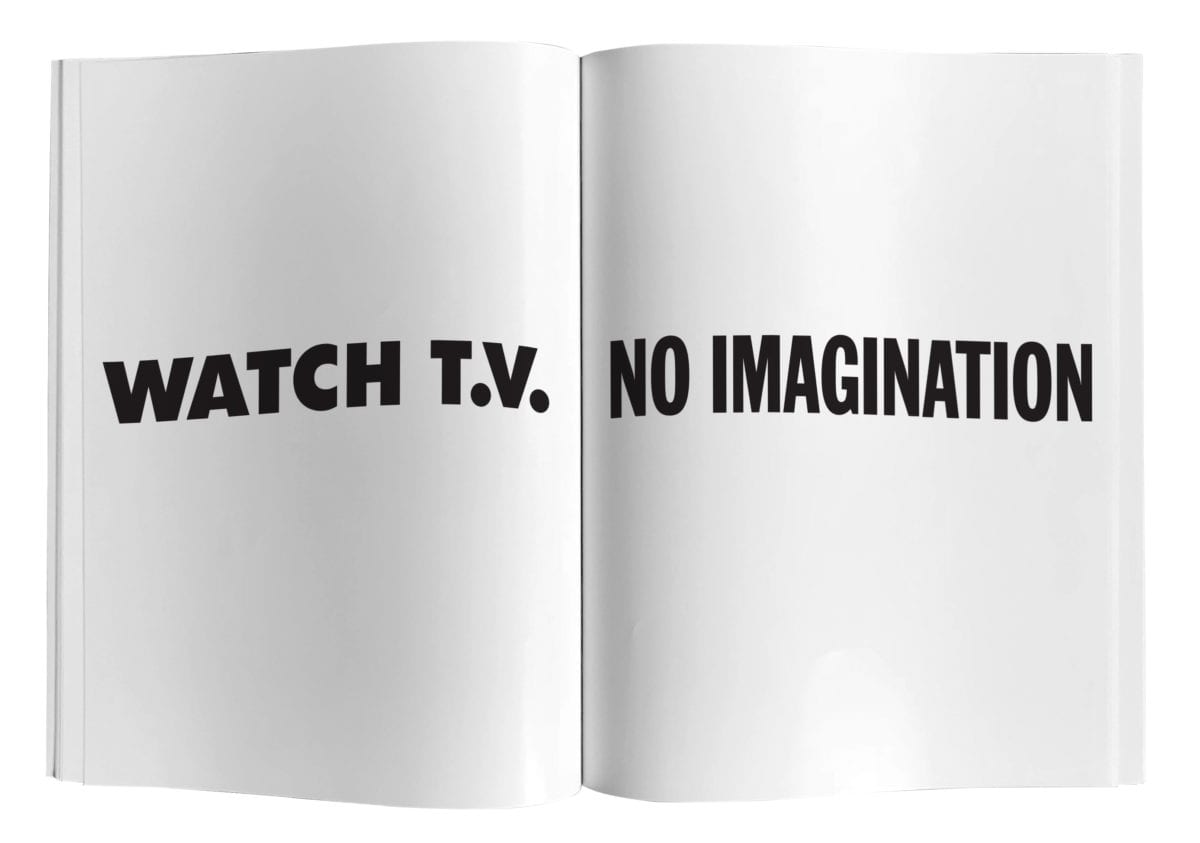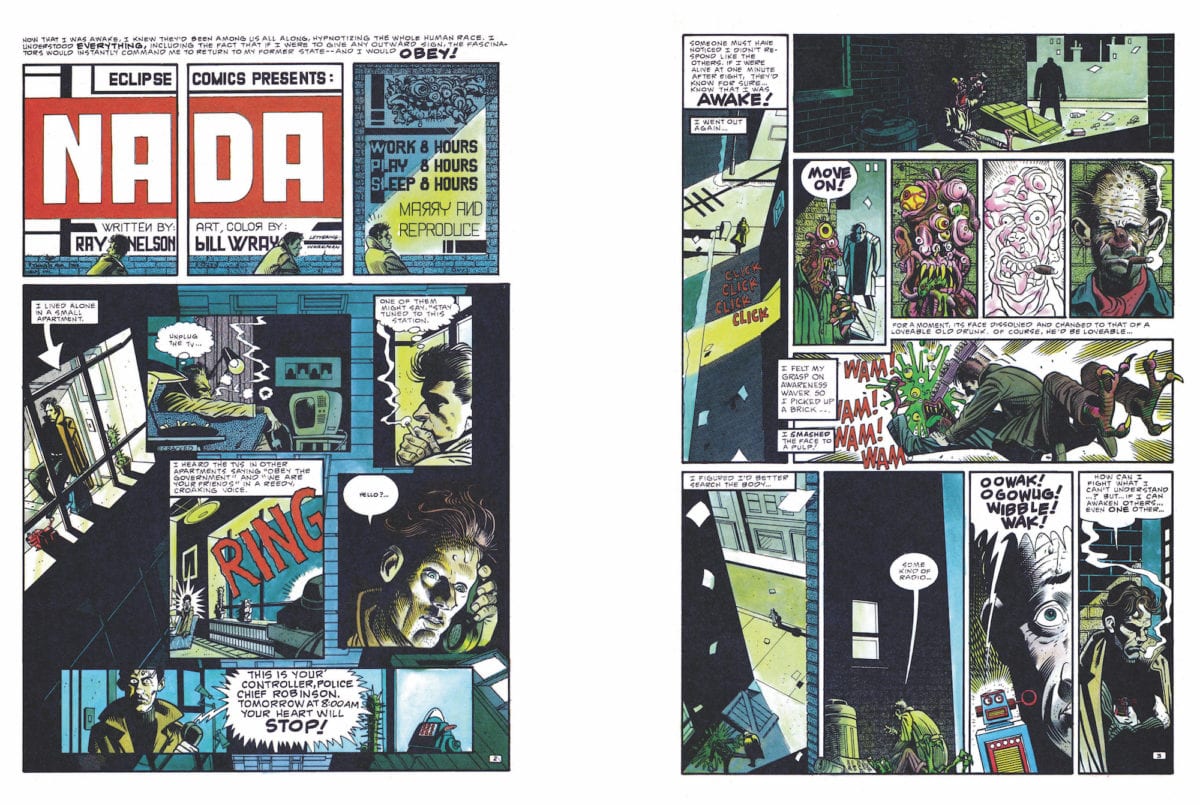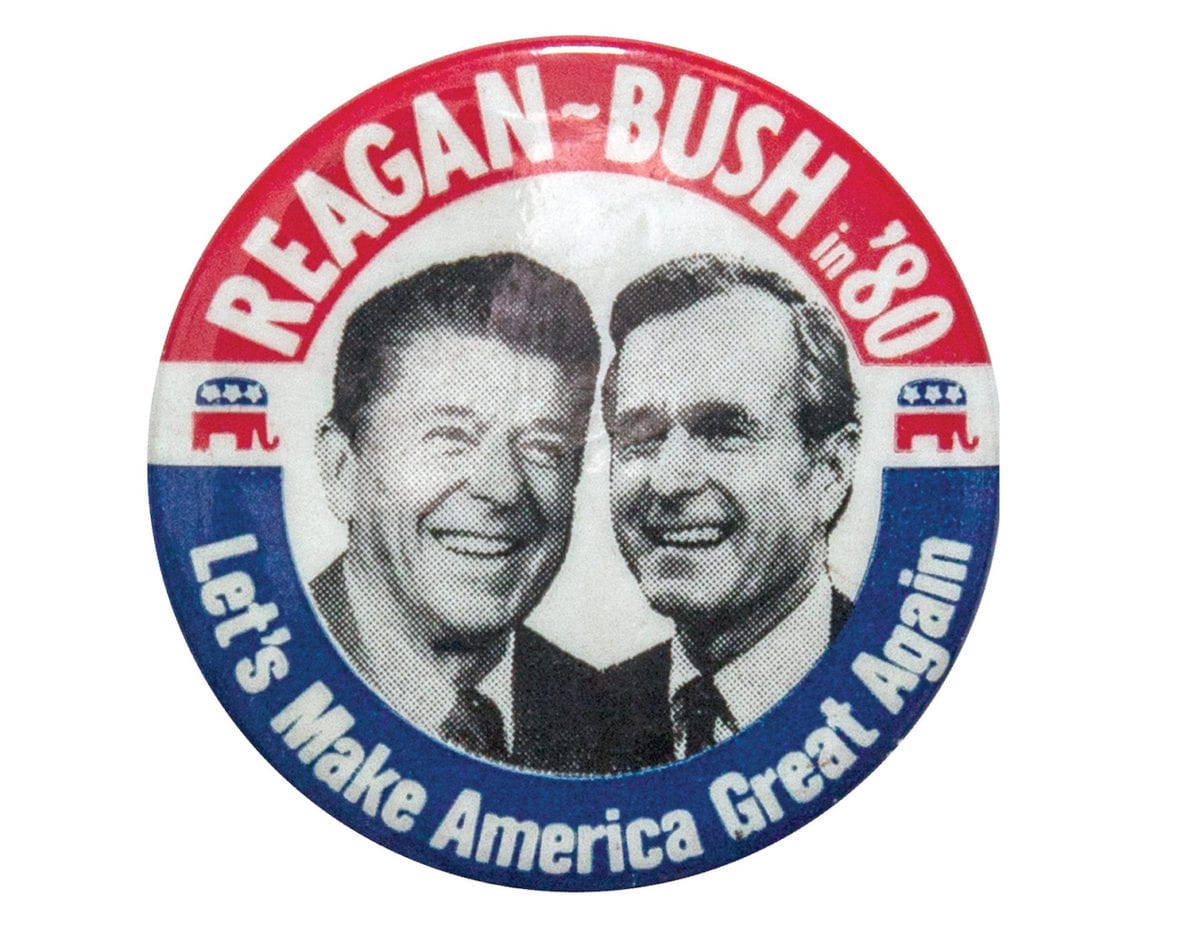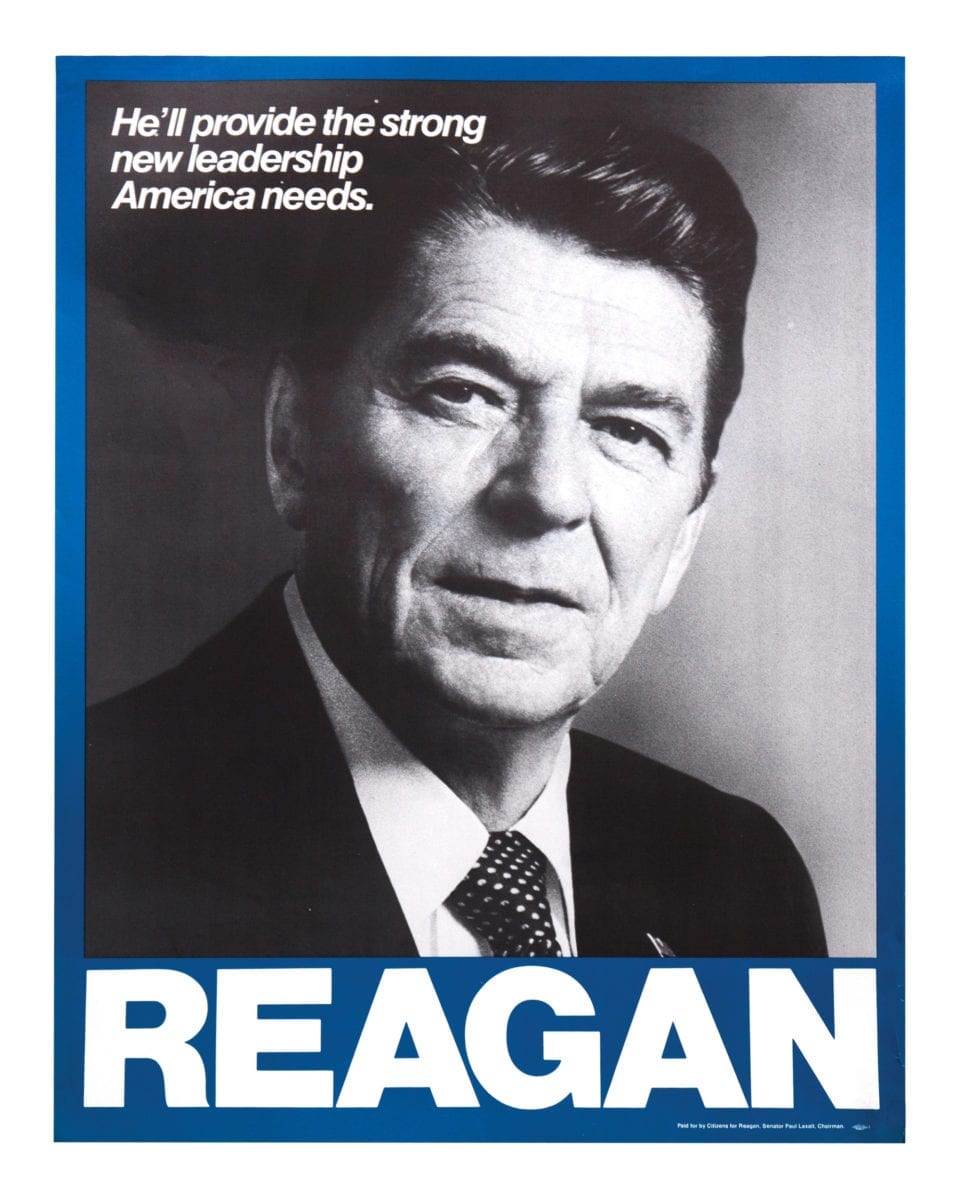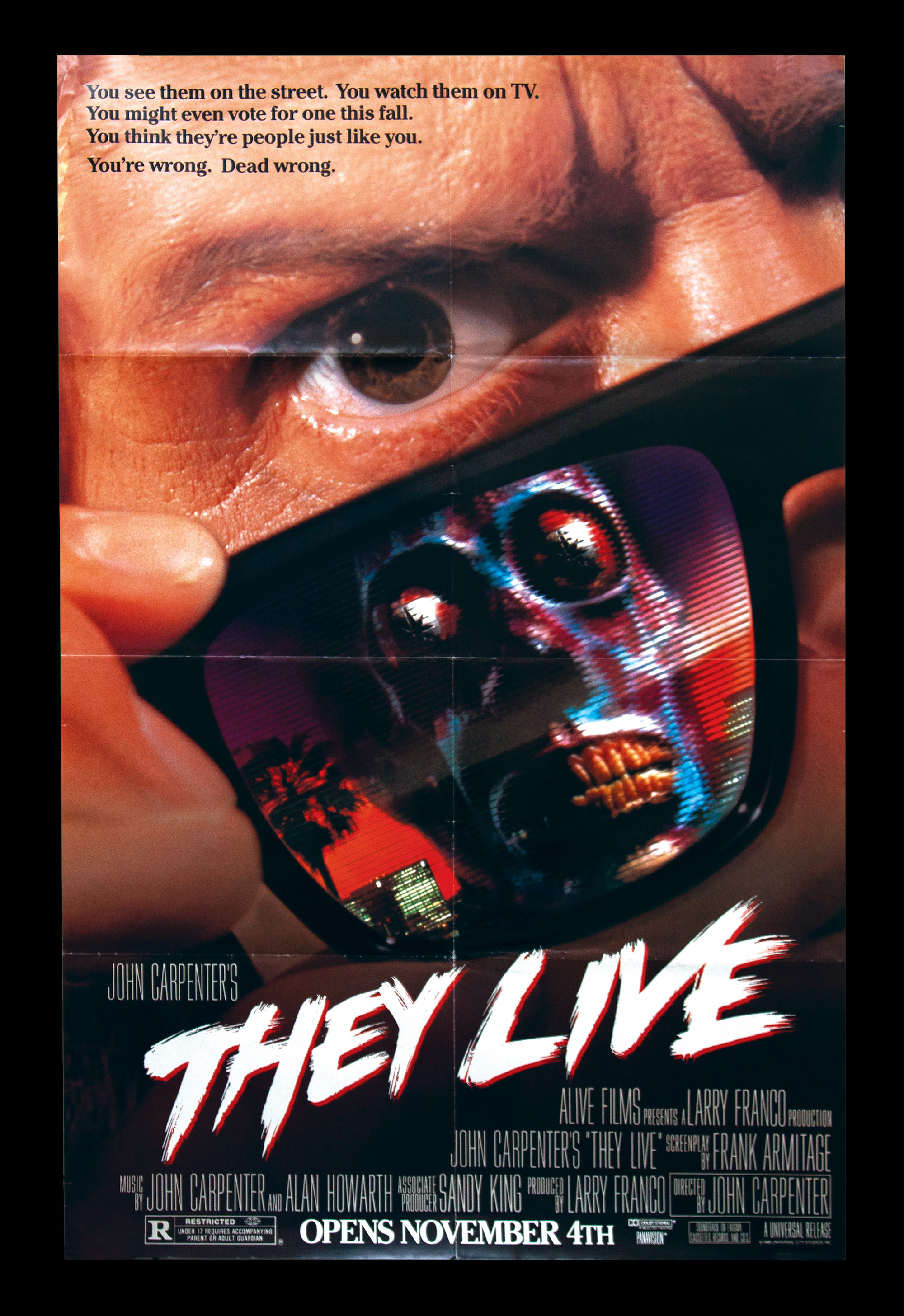
OBEY. Huge black capital letters on a plain white cover send a strong message. The latest offering from Rough Trade Books, the publishing imprint (launched just last year) of the storied music label, packs a punch. OBEY. The phrase will be familiar to many, popularized by Shepard Fairey in his OBEY clothing line and earlier activist posters. Fewer will know of its origins in a 1988 John Carpenter film, They Live, which was critically panned at the time and is rarely mentioned alongside such Carpenter classics as The Thing and Halloween. A unashamed B-movie, the film features magic sunglasses and an alien invasion, and stars ex-wrestler Roddy Piper.
Designer Craig Oldham dives in headfirst to create a book that not only explores and expands the distinctive world of the film, but comes disguised as a perfect replica prop from the movie. If that sounds mad, obsessive and just a bit geeky, that’s because it is—and gloriously so. They Live: A Visual and Cultural Awakening is the first in a new series from Rough Trade inspired by iconic fictional books that have appeared in films. “These books are like epiphanies; someone grabs them, and then suddenly the whole film changes because they’ve seen something,” Oldham tells me. He mentions Jack Nicholson’s crazed manuscript in The Shining as a possible focus for the next in the series, as well as important books that appear in Back to the Future 2, Rosemary’s Baby and Beetlejuice—but first up is this fictional magazine from They Live.

Carpenter’s science-fiction caper strikes a serious note with some straight-up interrogative social commentary on the growing rift of inequality that emerged with the rise of neo-liberalism and Reaganism at the tail-end of the 1980s. Set on LA’s infamous Skid Row, Roddy Piper plays an unnamed drifter (he is wryly identified as “Nada” in the film credits). His discovery of a pair of mysterious Ray-Bans enables him to see the world for what it truly is: a place overrun with hideous, preppy aliens who have enforced the dominant power structures and wealth divide. Those without the glasses are left ignorant of this breach, forced to work for less and less money, and brainwashed by a secret radio signal into submission: OBEY.
When Piper pops the glasses on for the first time in the film, he sees billboards advertising the latest sales and holidays to the Caribbean unveiled for what they truly are: commands to control the masses, with such bold phrases as CONSUME and MARRY AND REPRODUCE. Dollar bills, naturally, read “THIS IS YOUR GOD”. In-yer-face it might be, but there’s no denying that its message is clear. “The themes within it—about homelessness, class, money—those things are really political,” Oldham argues. “Yet the visual side of it draws from conceptual art: Jenny Holzer’s work, Barbara Kruger’s work, even performance and conceptual artists who worked with TV and magazine ads.”
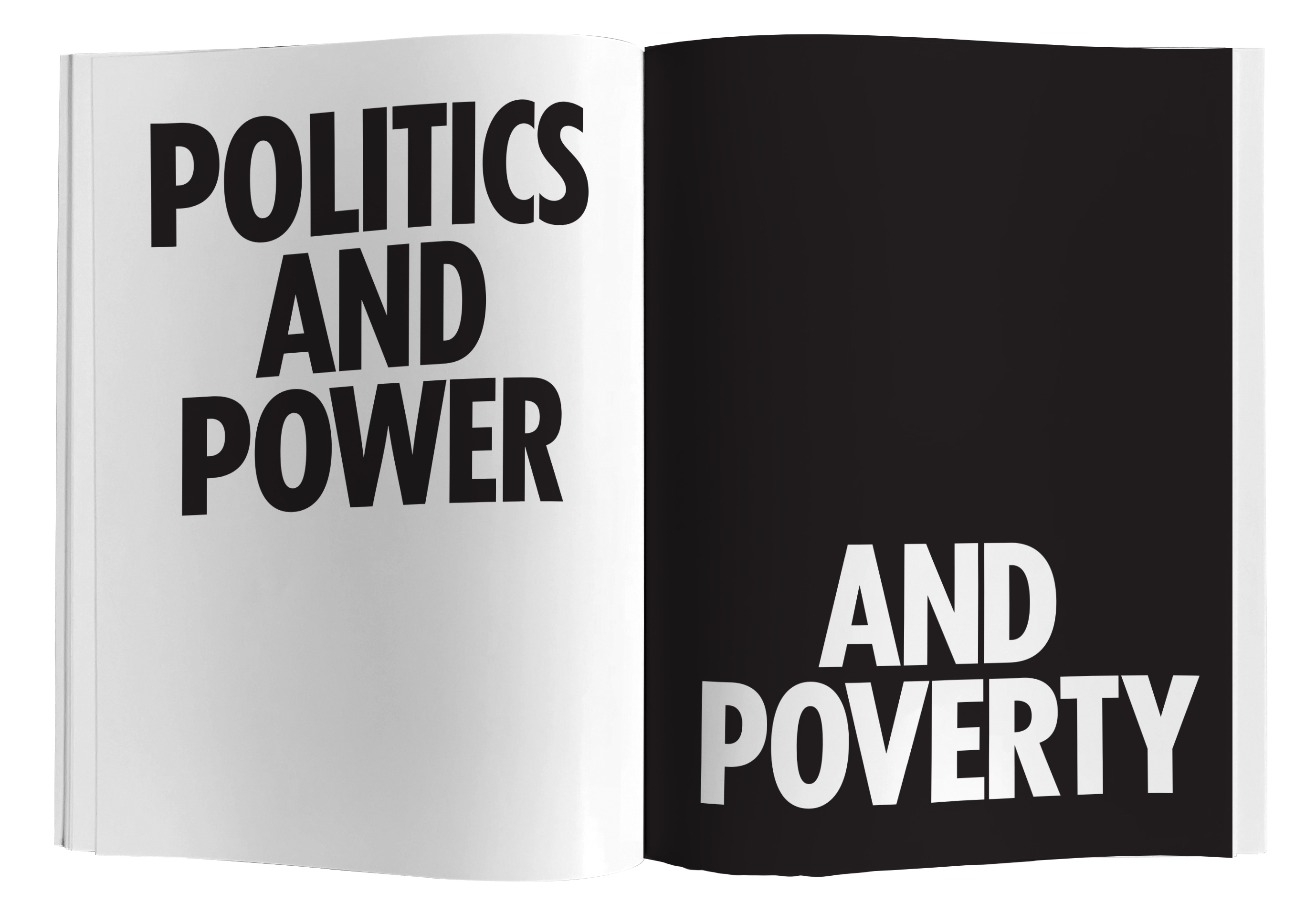
The pivotal moment in the film comes when Piper reaches a newsstand and plucks a magazine from its shelves. NO INDEPENDENT THOUGHT, it blares. He removes the glasses in shock, to see the pages return to a typical mix of infographics and headlines. This is the prop that Oldham has taken as his starting point. “This is what you see in the film. I tracked it down, and it’s actually made up of two magazines, Scientific American and Time.” This double-page hybrid of the two magazines is included in Oldham’s replica, a generic mix of blocky serif text and graphs that stands out like a sore thumb against the richly illustrated rest of the book, full of playful typographic experiments (including a full essay written in alien hieroglyphics).
So, is it a magazine or a book? “Well that’s the thing, it’s a magazine in the film, but it’s a book now, I guess,” Oldham muses. “That was the hardest thing when I was designing it; I was trying to design a book that would look like a magazine. It was a bit of a nosebleed at times. But I would class it as a book just for the substance of it really.” And a meaty book it is too, featuring essays and memoirs by (among others) Slavoj Žižek, Shepard Fairey and, naturally Oldham himself, on subjects as wide-ranging as the violence of liberation and hyper-masculinity, unpicking the politics of the all-American hero.

Fairey, a street artist and graphic designer, writes of the profound influence They Live was to have on his subsequent career, following his first viewing of the film in 1989. “For all of its B-movie effects and trashy dialogue, They Live gave a much-needed voice to my early graphic endeavours, and allowed me to transform my playful, visual non-sequiturs into fully realised expressions of visual and cultural revolt.” The bold commands of the film and media manipulation throughout can easily be read within Fairey’s work, from his early fly-posting to the visual style of his famous “Hope” poster that became a key part of the Obama campaign in 2008.
Even John Carpenter himself chips in with the foreword to the book, reminiscing about his early years as a director and his anger at the politics of the time. He describes the decade’s “ascendance of greed, consumption and deregulation” ending on a cautionary, reflective note: “Unfortunately the 1980s never went away. They’re still with us. They Live is very much about life in the United States and the West, then and now. Because if anything, things have gotten worse. It’s also just an old fashioned alien invasion move. Take it any way you choose.”
They Live, A Visual And Cultural Awakening
Edited by Craig Oldham. Published by Rough Trade Books
BUY NOW